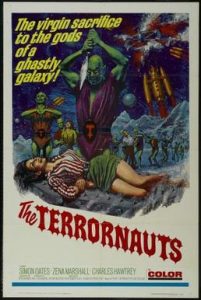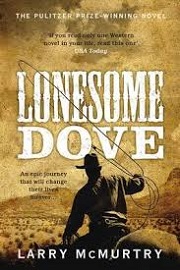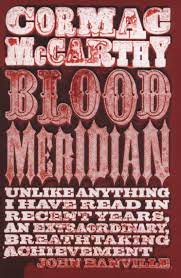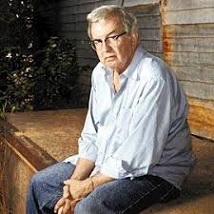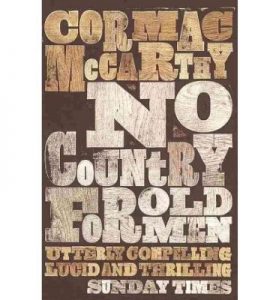
© Pan Macmillan
June 13th saw the death of Cormac McCarthy, reckoned by many to be the greatest American novelist of his generation. (However, he certainly wasn’t the last great American novelist, as some excitable types have suggested. Don DeLillo is still with us, and Donna Tartt surely has much petrol left in her tank, and no doubt more notables will emerge in the future.) Anyway, as a tribute, here’s a piece I wrote a few years ago after reading McCarthy’s No Country for Old Men (2005), and when I felt an urge to compare it with the Oscar-winning film version of the same name, directed by Joel and Ethan Coen, which had been released two years after its publication.
A word of warning… Just as there were in my entry a few days ago about the literary and cinematic versions of Jurassic Park – many spoilers lie ahead about No Country for Old Men in its book and film forms!
I greatly admire Cormac McCarthy’s novels Blood Meridian (1985) and The Road (2006). However, I hadn’t felt any overwhelming desire to read another of his most famous works, 2005’s No Country for Old Men, because I’d already seen the 2007 movie adaptation of it by Ethan and Joel Coen and I’d heard that the film followed the book closely.
Thus, thanks to the Coen Brothers, I already knew No Country for Old Men’s plot and characters. I’d also found the film vaguely dissatisfying. As I rather pretentiously explained to a friend at the time, “It’s like a Frankenstein’s monster where Jean-Paul Sartre’s head is stitched onto Clint Eastwood’s body.” What I meant was that for most of its running time the film was a lean, ruthless thriller, a gripping piece of modern western noir. But then near the end, its remorseless storyline just stops. After that, there’s a protracted scene where Tommy Lee Jones’s Sheriff Bell character visits an elderly relative and announces his intention to retire because, basically, the world is a terrible place and he can’t handle it any longer. And so the film seems to peter out amid lamentations of existentialist angst.
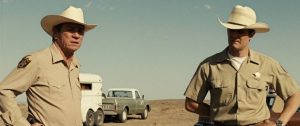
© Miramax Films / Paramount Vantage
I’d assumed that, since it was supposedly a faithful adaptation of the book, the book would have a similarly dissatisfying ending. Which admittedly was a bit unfair towards Cormac McCarthy.
A while ago I spotted a second-hand copy of No Country for Old Men, the book, on sale in a charity shop. And with that jolt of horror you get occasionally when you’re growing older and realise how quickly time seems to be passing, it occurred to me how it’d been a dozen years since I’d seen the movie. I’d also forgotten a lot of what’d happened in it. This seemed a good opportunity to buy the literary version of No Country for Old Men and acquaint myself with it.
My main impression after reading No Country for Old Men was that, yes, for the most part, the Coen Brothers were remarkably faithful to the original when they made their movie. As the story unfolds – a hunter and Vietnam vet called Llewellyn Moss stumbles across the bloody, corpse-strewn aftermath of a drug-deal-gone-wrong on the remote Texas / Mexico border, lifts a satchel full of money and makes a run for it, only to be pursued by a gang of vengeful narcos, as well as by a certain Anton Chigurh, a hitman so relentless, merciless and fearsome he makes the Terminator look like Bambi – I found near-identical scenes from the movie returning to my memory after many years.
One difference between the book and the film I noticed early on was when Moss, having scarpered with the money, nobly but foolishly decides to return to the scene of the massacre because he’d left behind one survivor, a badly-injured gangster who was begging for water. When he comes back with some water for that survivor, the survivor is surviving no longer; and one of the cartels involved has sent along some new hoodlums to find out what’s happened to their drugs and money. There follows a nail-biting chase across the desert, climaxing with Moss flinging himself into a river to escape the hoodlums. In the film, the Coen Brothers ratchet the suspense up further by introducing a big attack dog that doesn’t appear in the book. Even the river doesn’t deter the brute in its pursuit of Moss because it’s a powerful swimmer. In fact, the dog is a crafty metaphorical foreshadowing of Anton Chigurh, who is soon pursuing Moss too. If there’s one thing you want following you even less than a big attack dog, it’s him.
The book also has more of Sheriff Bell, the ageing lawman trying to find and save Moss whilst also keeping tabs on Carla Jean, Moss’s young wife. At regular intervals, there are short chapters showing Bell’s stream of consciousness while he ruminates on existence and the general state of things. “My daddy always told me to just do the best you know how and tell the truth…” he says at one point. “And if you done somethin wrong just stand up and say you done it and say you’re sorry and get on with it.” This makes him a likeable and sympathetic character, but not too much so. Later, as we hear more of his musings, we discover some of his views are pretty reactionary and probably if he was still around in 2016 – the story is set in the 1980s – he’d have voted for Donald Trump. These interludes also prepare us for the gloomy philosophical ending, in a way we weren’t prepared for it whilst watching the film.
For much of the book and film, the plot is an increasingly desperate and nasty cat-and-mouse game between Moss and Chigurh, while various foot-soldiers arrive from the cartels and get blown away in the crossfire. McCarthy describes it all in his admirably economical and deceptively simple-looking prose, though lovers of punctuation will cringe at his brutal disregard for inverted commas.
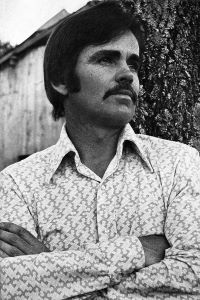
From wikipedia.org / © David Styles
It helps too that McCarthy really seems to know the macho, rural and violent world he’s writing about: its cartel machinations, its police procedures, its vehicles, its guns: “The rifle had a Canjar trigger set to nine ounces and he pulled the rifle and the boot towards him with great care and sighted again and jacked the crosshairs slightly up the back of the animal standing most broadly to him… Even with the heavy barrel and the muzzlebrake the rifle bucked up off the rest. When he pulled the animals back into the scope he could see them all standing as before. It took the 150-grain bullet the better part of a second to get there but it took the sound twice that.” I’m unfamiliar with McCarthy’s background – he was very reclusive – and have no idea if he was really the man’s man, the rugged Hemmingway type, that he comes across as here. But the fact that he does certainly doesn’t harm the telling of the story.
I felt apprehensive as I approached the novel’s end. Would the main storyline finish as abruptly and unsatisfyingly as it did in the film? In the latter, Bell arrives at a motel for a rendezvous with Moss, only to discover that Moss has just been killed (offscreen) by some cartel hoodlums. After that, the film has only the scene where Bell decides to call it quits, plus one where Chigurh pays a visit to the now-widowed Carla Jean and it’s implied that he executes her. (In the book, it’s spelt out more clearly.) No doubt the Coen Brothers were happy to make a statement about the fickleness of fate and the randomness of life and death, and by this late moment in the film, Moss had surely used up all of his nine lives. But having spent the most of two hours rooting for him, I wanted something more than a brief, flippant reference to him getting killed. Call me old-fashioned, but I’d have liked a little more closure with the character.
In the book, Moss dies with an equal sense of arbitrariness – Bell shows up at the motel and finds out that his man has just been assassinated. However, there’s more. The Coen Brothers made a major break with this section of the book because they left out a character, a female teenage runaway. McCarthy has Moss pick the girl up while she’s hitchhiking and while he’s making the fateful journey to the motel. To be honest, the girl isn’t much of a character, being a teenage brat who thinks she knows it all. But at least her naivete provides context for Moss, who by now is feeling as old, jaded and world-weary as Bell. Later, at the motel, she offers to sleep with Moss, but wanting to stay faithful to Carla Jean he turns her down.
When Moss finally gets there, yes, the gangsters have intervened and Moss is dead, as was the case in the film. However, the book has a deputy tell Bell what happened from the eyewitness reports: “…the Mexican started it. Says he drug the woman out of her room and the other man (Moss) came out with a gun but when he seen the Mexican had a gun pointed at the woman’s head he laid his own piece down. And whenever he done that the Mexican shoved the woman away and shot her and then turned and shot him…. Shot em with a goddamned machinegun. Accordin to this witness the old boy fell down the steps and then he picked up his gun again and shot the Mexican. Which I dont see how he done it. He was shot all to pieces.” So at least Moss dies making a noble (if futile) self-sacrifice and goes down with guns blazing, taking out one last bad guy. That’s more like the closure I was looking for.
I know people who’ve objected to both the book and film of No Country for Old Men because of another disappearing plotline, the one involving Anton Chigurh, who in the film was memorably played by Javier Bardem. Both end with him still on the loose, presumably being unspeakably evil and continuing to kill people. But I don’t mind that loose thread so much. I find it appropriate that McCarthy wraps up the story with Bell lamenting about the darkness of the world; while Chigurh still lurks in that darkness as a symbolic bogeyman.

© Miramax Films / Paramount Vantage


